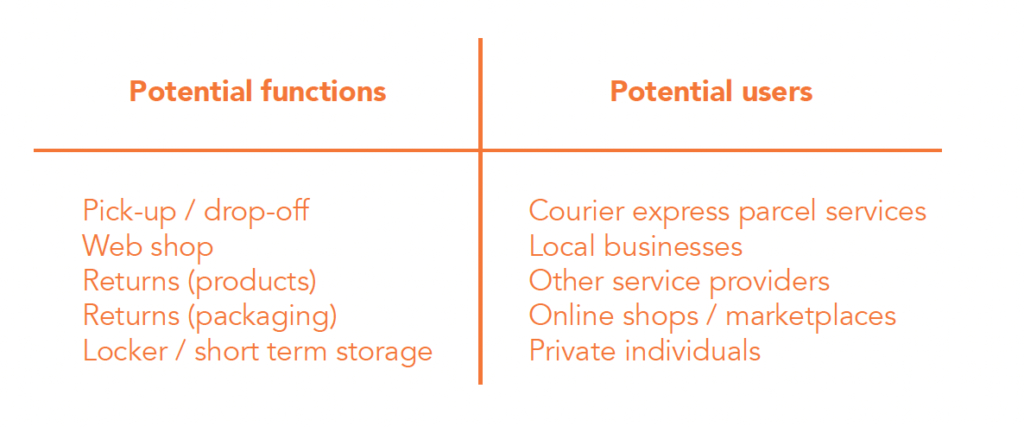Integrating parcel lockers has become crucial as urban spaces evolve, especially with the booming e-commerce sector. A new ULaaDS publication, developed by Bax & Company, with valuable insights from Gemeente Groningen (NL) and the University of Groningen, addresses the rapid expansion of these services and their impact on urban life and public spaces.
Key highlights of the development process of the framework include:
- Interdepartmental collaboration and academic research
- Stakeholder engagement through the ULaaDS project
- International benchmarking: what are best practices?
- Strategic spatial analysis: where should parcel lockers be placed?
The spatial analysis followed different stages in continuous consultation with the city’s employees, helping Groningen find the most suitable spots for parcel lockers. The aim was threefold:
- To ensure accessibility for active travel, avoid car travel for parcel pick-ups.
- Add facilities in underserved areas to complement the existing private parcel locker networks.
- To develop an integrated approach that embeds logistics services in the city’s mobility hubs strategy.
The framework offers valuable insights for cities aiming to manage urban logistics challenges while prioritizing community needs and sustainability. Discover how this approach can guide urban planning strategies.
Business and operational models are widely discussed in deploying parcel lockers. Most public authorities support an open network that is carrier-agnostic and can be used by any courier firm to avoid duplication of single-label lockers. Despite the public authorities’ preference, closed networks are much more common. These tend to be single/private labels used by a specific parcel locker provider (potentially, its chosen logistics partners).
Potential functions and types of users are closely connected to the type of business and operation models. Generally, public authorities prefer both categories to be as diverse and broad as possible.

Public authorities often have more control over parcel locker placement on public grounds, bringing municipalities, landowners, and suppliers into the decision-making process. In Austria and the UK, public land use requires approvals and has the potential to generate rental income. Providers often opt for private areas like shopping centers, transport hubs, or gas stations to bypass planning permissions and encourage trip chaining. In Austria, restricted-access sites like residential complexes and company buildings are also utilized for parcel locker placement. This approach enhances flexibility and minimizes bureaucratic hurdles.
Source: ULaaDS

Open parcel locker is expanding very quickly nowadays. As an R&D house, we’ve actually developed similar project “universal locker” as a result of the growing demand on the market that are operated contactless via mobile devices. If this project still in the development process, might consider our R&D team here in PL.